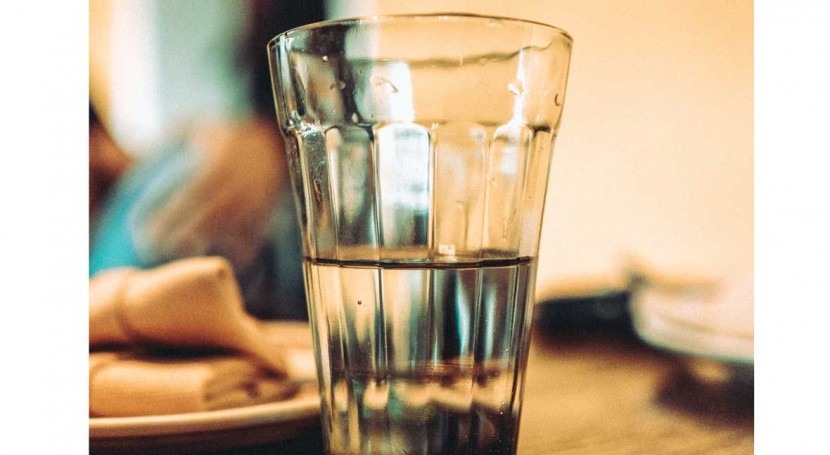A new material patented by a Youngstown State University professor and student could lead to a process to help remove the increasingly dangerous amounts of pharmaceuticals in the tap water coming into our homes.
Doug Genna, associate professor of Chemistry, and Mariah DeFuria, a 2017 YSU graduate with a bachelor’s degree in Chemistry, received Patent No. 10,450,205 last fall for designing a material, called YCM-101 (YCM = Youngstown Crystalline Material), that can bind and remove pharmaceuticals from water.
“One day you could imagine this material being deployed in people’s houses on their waste water out line or at a water treatment plant itself,” Genna said.
DeFuria, an undergraduate Chemistry student when the research was being conducted, is believed to be the first student co-inventor on an issued patent in YSU’s 112-year history. She is now a student in YSU’s Doctor of Physical Therapy program.
“(Genna) has worked incredibly hard, which is evident based on his many publications, grant awards, and this patent,” DeFuria said. “I am proud to have been a member of the lab.”

Mariah DeFuria and Doug Genna
YCM-101, part of a class of materials known as metal-organic frameworks, was developed in a lab that Genna started in 2014, when he joined the YSU Chemistry faculty. Since then, the lab in Ward Beecher Hall on campus has had up to 20 undergraduate students and has graduated five master’s students, some of whom have gone on for PhDs at Princeton, University of Michigan, Ohio State and Case Western Reserve. It has also published 10 research papers in scholarly journals in the area of metal-organic frameworks
The research is funded through about $500,000 in grants from the National Science Foundation, U.S. Department of Energy, Pacific Northwest National Laboratory and the American Chemical Society.
The World Health Organization reports that pharmaceutical contamination of drinking water is an emerging problem, with nearly 25 percent of the world's rivers and lakes effected. It’s a particular concern in the United States, which consumes on average 50 percent of the world’s pharmaceuticals. Most of the contamination is from medicines people take and then excrete out.
Genna, who earned a PhD from Johns Hopkins University and did post-doctoral work at the University of Michigan, said his lab got interested in pharmaceutical contamination only after it created YCM-101.
“We were looking for something cool for it to do,” he said. “I was reading the literature and saw that there was this increasing problem of pharmaceutical contamination in water. We didn’t originally set out to study this particular path; we ended up just being drawn into it.
“My PhD advisor would often say we have to take what nature gives us, and that is really what we did.”



